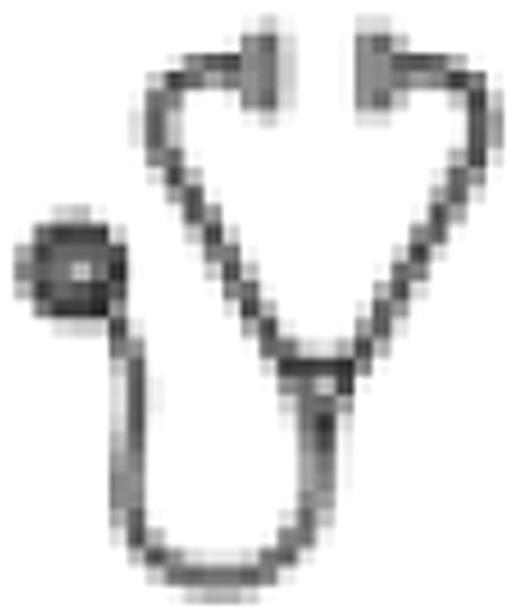Abstract
Abstract 1811
Busulfan (Bu) is a standard component of HSCT regimens and shows a narrow therapeutic range. In very young children, Bu exhibits large pharmacokinetic (PK) variability. Intravenous (IV) Bu clearance was demonstrated to be non-linearly related to body weight (BW) and thus BW is used to optimally define the IV Bu dosage in children [Vassal G. et al., CCP 2006]. Search for additional relevant covariates is still a topical question to further explain the variability in young children (Pts) and infants.
to screen for the effect of heterogeneous patient characteristics on IV Bu PK disposition, and to evaluate the consistency of weight-based dosing strategy (as recommended in the European SmPC) in a large cohort of children, especially in patients with rare diseases and a BW less than 9 kg.
The prospective observational study included 115 patients (pts), mostly infants (median age: 13 months [0.3-148], median BW: 9 kg [3.5-58]). Main diagnoses were immunodeficiency (n=71, mainly SCID and lymphohistiocytosis) and inherited metabolic disorders (n=15). Additional data (90 pts, mostly malignant diseases) from two prospective clinical trials previously described [Nguyen L. et al., BMT 2004] [Vassal G. et al., CCP 2006] were pooled with the observational dataset. Altogether, 205 children aged from 10 days to 15 years (median of 30 months) and weighed from 3.5 to 62.5 kg (median of 11.0 kg) were analysed. IV Bu (Busilvex®) was given over 2 h q6h × 16 doses. For most of the pts (88%), the starting doses were given according to the European SmPC: 1.0 mg/kg, 1.2 mg/kg, 1.1 mg/kg, 0.95 mg/kg and 0.8 mg/kg for pts <9 kg, 9 – <16 kg, 16–23 kg, >23–34 kg, and >34 kg BW, respectively.
PK was assessed on plasma samples from the 1st, 9th and 13th dose (536 PK datasets). PK analysis was performed using Non Linear Mixed Effect modelling with the NONMEM program.
A one-compartment PK model suitably fitted the concentrations vs time data. BW remained the main determinant of IV Bu PK disposition. Increase of IV Bu clearance with child's growth was observed to be faster in younger than in older children. For children < 9 kg, a doubling in BW is associated with a 2.4-fold increase in Bu clearance while a 1.7-fold increase in Bu clearance is observed in pts ≥ 9 kg for the same BW growth. To take into account this difference, the relationships between Clearance (CL) and BW was modelled using a different allometric exponent for children with a BW of < 9 kg and ≥ 9 kg.
The predictive equations were: CL (L/h) = 2.18 × (BW/9)1.25 and CL(L/h) = 2.18 × (BW/9)0.76 in pts < 9 kg and ≥ 9 kg, respectively. The inter-individual variability decreased from 64% (covariate-free model) to 23% for Bu CL. No further significant impact was identified even when considering large fluctuations of the following covariates: creatinine clearance (up to 11 × Upper Normal Limit), bilirubin (up to 4 × UNL), ferritine (up to 43 × UNL), hepatic transaminases (up to 39 × UNL), alkaline phosphatases (up to 4 × UNL), gGT (up to 86 × UNL), total protein (0.5 to 1.4 × UNL) and lactate deshydrogenase (up to 3 × UNL). No PK difference was observed between patients under Benzodiazepine and those under Phenytoin prophylaxis, neither when comparing different groups of diagnoses. Similar performances for targeting an AUC range of 900 – 1500 μM.min were achieved when comparing Bu dosing either adjusted according to the model predictive equation or with the use of the European SmPC recommendations. The success rates were about 60% and 80% in pts < 9 kg and ≥ 9 kg respectively.
BW is confirmed to be the only relevant predictor to optimally define the IV Bu dosing in children. The population PK model has established a higher allometric exponent for younger children (< 9kg) in order to take into account the faster maturation of clearance in this weight group. This model is consistent with the dosing strategy recommended in the EMA registration.
Daher Abdi:Pierre Fabre Médicament: Employment. Pétain:Pierre Fabre Médicament: Employment. Nguyen:Pierre Fabre Médicament: Employment.

This icon denotes an abstract that is clinically relevant.
Author notes
Asterisk with author names denotes non-ASH members.

